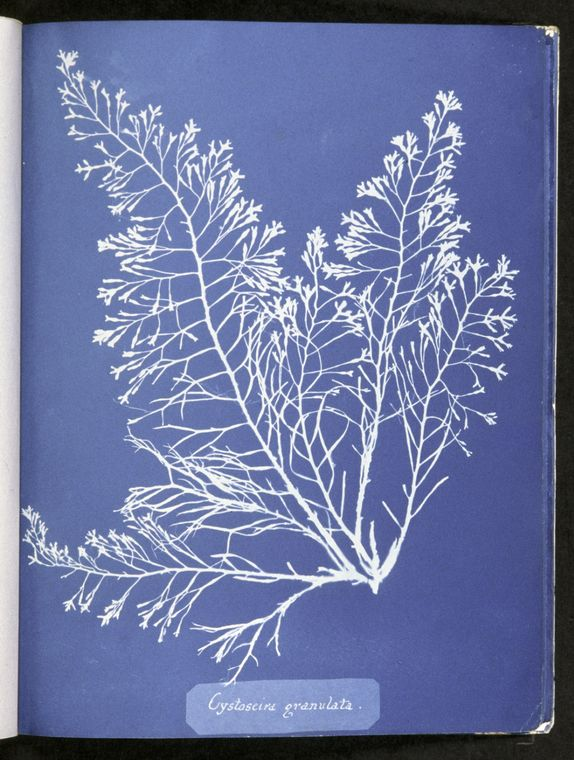Using the old-fashioned blueprint chemical process for modern art
The cyanotype printing process is not only still useful in the 21st century, it's still beautiful
Takeshi Moro
Have you ever wondered why we call floor plans and other diagrams “blueprints”? The term “blueprint” originates from the cyanotype printing process, which yields prints in vivid cyan-blue colors and was widely used to replicate complex technical drawings in the 19th and 20th centuries. While cyanotype printing could have been made obsolete by the invention of copy machines, artists today continue to use this process to create startling cyan images. For example, photographer Takeshi Moro exclusively used cyanotype to produce pieces for his 2013 exhibition “Wannsee in Berliner Blau.” The crude quality of the images was meant to transport the patrons to the time of the 1942 Wannsee Nazi Conference, and their blue hues were intended to invoke the sorrow of this era of history.

An example of cyanotype of algae done in the 19th century by Anna Atkins
New York Public Library
I helped Takeshi to develop images for the exhibition by making the cyanotype solution in the lab. I combined two chemicals, ferric ammonium citrate and potassium ferricyanide, at a fixed ratio. Takeshi then applied the solution to the photographic prints and exposed them to light (the duration of this exposure period and the intensity of the light will affect the contrast of the image). Together, the light and the citrate cause the iron atoms in the ferric ammonium citrate to lose an electron, making them more unstable and reactive toward the ferricyanide. This reaction yields a dye known as Prussian blue that saturates the print and produces a cyan-toned image.
Given that “photography” is now as simple as aiming your iPhone 11’s multiple cameras at an object and pressing a button, it’s refreshing to know that photographers continue to use cyanotype printing as a strategic artistic choice to elicit a specific emotional response from the viewer. And while it may have been inconvenient for Takeshi to enlist a chemist to assist in producing pieces for his exhibition, we agreed that the experience was very valuable because we both came to learn about and appreciate the other’s area of expertise. Cyanotype creates stunning images and opportunities for collaboration between artists and scientists—there’s no need to be blue!





















